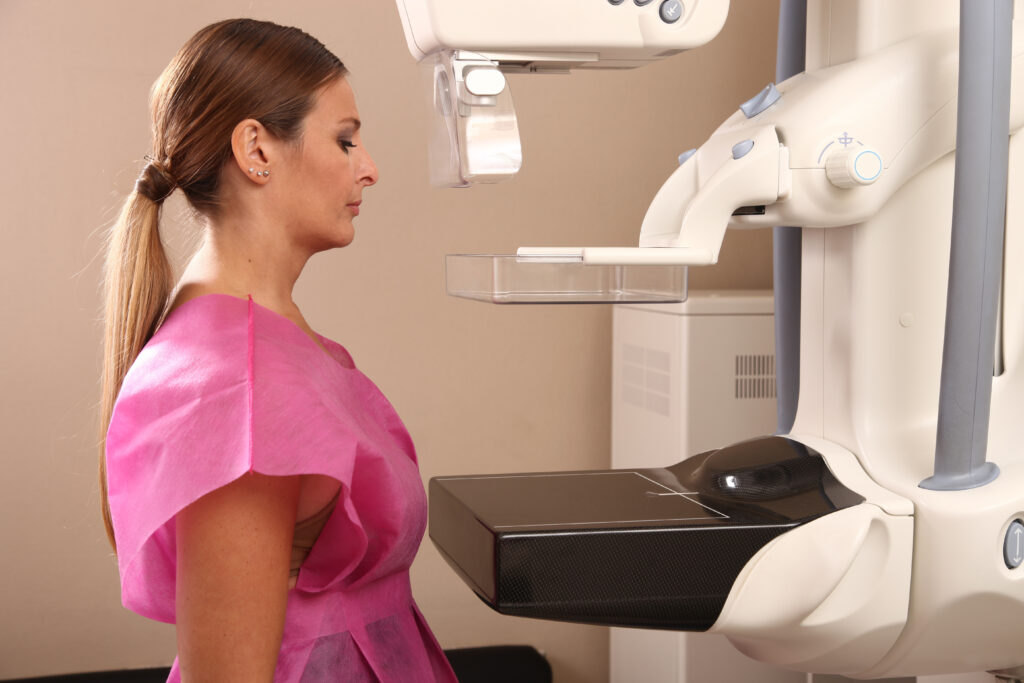We urgently need to use Australian data to understand the breast cancer screening rates of Australian women with diabetes, compared with those without the condition.
More than one million people in Australia currently live with cancer and incidence rates are on the rise globally. One major contributing factor is our ageing population, but that’s only one piece of the puzzle. Our lifestyles are also contributing to this upward trend, as we’re constantly exposed to cancer-promoting risk factors. Our unhealthy diets, sedentary lifestyle, rates of obesity, and alcohol and tobacco consumption are all increasing our risk of developing cancer. Many of these cancer-related risk factors are also associated with diabetes and, as of 30 June 2023, over 1.4 million people were registered with diabetes on the Australian National Diabetes Services Scheme.
Given the shared risks of cancer and diabetes, it should come as no surprise that diabetes has been correlated with an increased risk of cancer, and, in 2018, diabetes was reported to be the predominant attributable risk factor for cancer burden in Australia. There are various factors at play; chronic inflammation, hyperinsulinaemia, hyperglycaemia, gut microbiome, insulin-like growth factors and dyslipidaemia – with all of these factors identified to contribute to the link between diabetes and an elevated cancer risk.
What’s even more concerning is that this connection doesn’t just have an impact on the chances of developing cancer, it also affects mortality rates. People with diabetes and even those with pre-diabetes are facing a higher risk of dying of cancer, with death rates rising linearly with increasing glucose levels.
Although diabetes has been associated with a number of different types of cancer, our focus here is on breast cancer, as it is the most diagnosed cancer among women in Australia, with near 20 000 women diagnosed in 2021. In addition, in 2021, diabetes contributed 3100 disability-adjusted life years to the breast cancer burden (the number of years of life lost due to premature death and years lived in ill-health or disability). The risk of breast cancer has been identified to be significantly increased in women with diabetes, with a 20% increased risk of breast cancer identified among women with diabetes in comparison with those without diabetes.
The increased risk of breast cancer among women with diabetes is not the only concern. Women with diabetes are also substantially more likely to be diagnosed with advanced stage breast cancer than those without diabetes. Further, women with diabetes have been identified to be more likely to have a delayed diagnosis and be at significantly increased risk of mortality related to breast cancer, compared with women without diabetes. Women with diabetes have also been found to have a longer interval from their last mammogram to breast cancer diagnosis, despite mammography screening being interrelated to less advanced cancer at diagnosis and reduced mortality.
Although women aged 50–74 years are encouraged to have two-yearly screening mammograms (here), during the two-year period 2018–2019 just 55% of women in Australia aged 50–74 years had a free mammogram through BreastScreen.

With this statistic in hand, and the knowledge of the correlation between diabetes and increased rates of breast cancer, we sought to identify the breast cancer screening trends of women with diabetes living in Australia through conducting a scoping review of the literature. Surprisingly, upon review of the literature, no Australian data were found on the breast cancer screening rates of women with diabetes compared with women without the condition.
In our research, we found the breast cancer screening practices of women with diabetes compared with women without diabetes living in Australia are unknown. Findings from countries with similar breast screening programs, however, may be presented as an appropriate comparator for Australia. Canada, Denmark, France, Israel and South Korea all offer free or subsidised mammograms to women over the age of 50 years. Despite having breast screening programs and offering subsidies, these regions have lower breast cancer screening rates in women with diabetes compared with those without diabetes.
The burden of diabetes and complex demands of chronic disease management may explain lower breast cancer screening rates for women with diabetes. In Australia, people with diabetes are encouraged to complete an annual cycle of care which includes glycated haemoglobin, blood pressure, kidney, lipid, weight, feet and eye checks as well as a healthy eating, physical activity, medication, smoking, emotional health and diabetes management reviews. This takes commitment, time and proactive self-management from the person with diabetes to ensure completion of all the recommended health checks.
A report from 2018 indicated completion rates for all requirements of the annual cycle of care ranged from 0.9% in Indigenous populations up to 37% over a 12–18-month period in non-Indigenous people. This identifies deficiencies in the system and despite recommendations, routine diabetes checks are not occurring. The current annual cycle of care does not include any references to attend to recommended cancer screening, such as breast cancer screening, but it has been identified that preventive care utilisation is lower when the number of guideline-recommended preventive services is higher.
Routine preventive care, though reported to not be occurring as per recommendations, may still compete with the prioritisation of cancer screening, particularly amidst the current general practitioner shortage in Australia. We know from overseas examples that general practitioners, who predominantly sit in primary care settings, have limited time to implement all clinical guidelines and may have to focus on emergent needs and direct complications as they arise.
Individual characteristics may also have an impact on breast cancer screening participation. Being obese, a smoker, or having depression have all been reported to correlate with reduced screening rates. The World Health Organization indicate that overweight and obesity accounts for 44% of diabetes cases and people with diabetes are two to three times more likely to have depression than those without diabetes. With these factors more common in people with diabetes, there is the risk that individual characteristics as well as a diabetes diagnosis could compound to further reduce breast cancer screening rates in women with diabetes. In addition, lower socio-economic, educational levels and health literacy have also been associated with lower compliance with cancer screening recommendations. However, some studies have identified that having diabetes is an independent barrier to breast cancer screening, not explained by socio-economic status.
In summary, diabetes is a risk factor for breast cancer and women with diabetes have significantly lower breast cancer screening rates compared to women without diabetes in countries with universal health care. Perhaps this reflects Australian trends, however, we don’t know what we don’t know; there is a need to utilise and correlate current available Australian data to understand the breast cancer screening rates of women with diabetes compared with those without the condition in the Australian context.
Australia’s primary care system is responsible for the screening of both breast cancer and of diabetes, so it is vitally important that primary care practitioners consider the risk of breast cancer to women who present with diabetes and other possible risk factors. Although it is promising that women are encouraged to undertake mammograms every two years from the age of 50, more research is needed to see what kind of additional screening may be required for women with diabetes. Research into the breast cancer screening practices of women with diabetes in Australia as well as the views of health care professionals involved in their care is needed to understand the barriers to breast cancer screening among women with diabetes.
Dr Leanne Mullan is a credentialled diabetes educator at the School of Nursing, Midwifery and Paramedicine at the Australian Catholic University in Brisbane.
Professor Bodil Rasmussen is the Chair in Nursing (Western Health) at the School of Nursing and Midwifery at Deakin University in Melbourne.
The statements or opinions expressed in this article reflect the views of the authors and do not necessarily represent the official policy of the AMA, the MJA or InSight+ unless so stated.
Subscribe to the free InSight+ weekly newsletter here. It is available to all readers, not just registered medical practitioners.
If you would like to submit an article for consideration, send a Word version to mjainsight-editor@ampco.com.au.

 more_vert
more_vert
Thank you for raising the issue that we do not know whether women with diabetes in Australia have a lower rate of mammogram screening than women without diabetes. The age of some of the articles supporting references, many of which are based on overseas research, demonstrate that more research is needed. The solution may be two pronged – diabetes annual cycle of care guidelines be expanded to include cancer screening for women and men and breast cancer screening program guidelines be expanded to included chronic diseases such as diabetes.